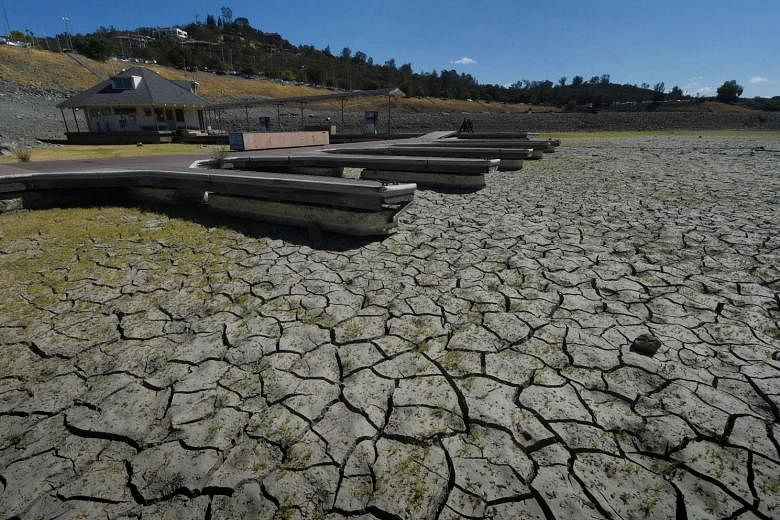LOS ANGELES (AFP) - The idea, for many, may be too hard to swallow.
But as California's historic drought drags on, experts and politicians are taking a serious look at "toilet to tap" options to guarantee long-term water supply.
The concept, which involves treating sewage water for human consumption, had until now failed to gain traction in the water-starved West Coast state largely due to the "yuck factor".
Few could stomach the idea that water coming out of a tap - however purified - was being flushed down a toilet just hours before.
Four consecutive years of drought, however, may force Californians to get over their squeamishness.
Snow melt from the Sierra Nevada, a key source of drinking water for the state, is virtually gone. Imported water from the Colorado river and groundwater are also in decline.
"Everyone is looking at wastewater recycling," said Mr George Tchobanoglous, a water treatment expert and professor emeritus at the University of California, Davis.
"Right now, we discharge a lot of this treated wastewater into the ocean and we could certainly use it," he added. "And it's certainly feasible and cost effective in large metropolitan and coastal areas like California."
In a study published last year, Tchobanoglous estimated that by 2020, the concept known as potable reuse could yield more than 350 billion gallons per year, enough for more than eight million Californians, or roughly one-fifth of the state's projected population.
The technology is already being used successfully in several communities in Texas, which has also faced a severe drought.
There, in what is known as direct potable reuse (DPR) or "toilet to tap", wastewater from toilets, washing machines, dishwashers and showers is turned into drinking water following a three-step purification process.
A similar plan for the city of San Diego, in California, never got off the ground more than a decade ago because of stiff opposition.
But now, as the Golden State struggles to meet mandatory water restrictions and as options run out, the project is back on the table.
Tchobanoglous said recent polls conducted for San Diego's Water Authority found that support for wastewater reuse now stands at 76 per cent, compared to 23 per cent in the early 1990s.
Advocates of water reuse point to California's Orange County purification plant, one of the oldest and largest in the world, as an example of the environmental and financial benefits of the technology.
The plant, which opened in 2008 during a previous drought, recently underwent a US$143 million expansion and treats 100 million gallons a day, enough for 850,000 people. A final expansion is planned to bring capacity to 130 million gallons a day.
Another, smaller facility in Los Angeles county - the West Basin treatment plant - also recycles Californian sewer water, for potable and industrial use.
"Traditionally sewer water was viewed as a waste but now we see it as a valuable resource from which we can produce one of the best quality waters," said Shivaji Deshmukh, assistant general manager at the West Basin plant.
Neither facility feeds its purified water directly into the drinking supply, as is the case in Texas.
Instead, it is infiltrated into the groundwater aquifer, which provides an environmental buffer, before it is drawn back to the surface for drinking.
But the technology is the same as that applied in direct potable reuse.
First the water goes through micro-filtration to get rid of tiny organisms such as bacteria. Then it is purified further through reverse osmosis. Thirdly, ultraviolet light zaps any remaining particles.
The result is a water as pure, if not more, than that on supermarket shelves.
Nasa uses the same technology on board the International Space Station, where special equipment recovers the crew's urine, breath vapor and sweat to produce water for coffee or brushing teeth.
The water reuse camp has a financial argument on its side, too. "Bottled water is typically 10,000 times more of the cost of tap water without necessarily being better quality wise," said Ron Wildermuth, spokesman at West Basin.
"About a day or two ago this water was sewage. Now it's the best quality water I could drink," he said, showing off a sample, and gulping it down.

